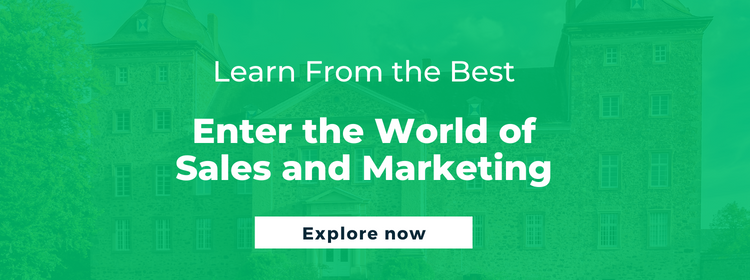What is the Concept of Outbound Marketing and Why is it Popular

Every successful marketer knows that outbound marketing is a great approach to turning an inadequate marketing strategy into a successful one. This is because, between inbound and outbound, the latter is known to reach a wider audience and makes for a highly-effective growth marketing strategy. But how does outbound marketing work? And why is this traditional approach still relevant today? Let’s have a look.
What is Outbound Marketing?
Also known as interruption or push marketing is a type of marketing approach where organizations proactively initiate communication and push information to a broad target audience to capture their attention and get them interested in a product. The intent is to drive customers closer to the brand, build awareness and eventually help boost sales. The main tactics can be categorized into cold mail, cold calling, and paid advertising.
Types of Outbound Marketing
This form of marketing is conventional and generally involves product promotions using billboard ads, TV commercials, telemarketing, print and radio ads, cold calls, direct mail, press releases, and so on. It is also incorporated into the digital space in the form of Pay-Per-Click (PPC) ads, pop-up ads, banner ads, and spam emails, among others.
Some of the most popular types include:
- Traditional advertising like print, television, radio, or billboards
- Through-the-line (TTL) advertising
- Email promotions
- Content syndication
- Events and tradeshows
Is Outbound Marketing Still Relevant Today?
There has been plenty of emphasis on inbound marketing in recent times, which is basically a highly-specific approach that focuses on creating content that informs and empowers the target audiences. So, if inbound marketing is a less-invasive and cost-effective way to cater to customer needs, why are organizations still incorporating strategies?
The main reason is that outbound marketing helps to directly connect with a broader range of audiences and effectively achieves awareness-based objectives. It helps boost brand relevance and informs the target audience about new products or services. Since it reaches a greater number of people, it contributes to higher lead generation which automatically leads to better sales.
So given its wide range of business benefits, outbound marketing is still a popular choice among brands and continues to form an important element of the marketing world today.
Pros and Cons of Outbound Marketing

It is important to weigh the pros and cons before you leverage it for your business. While we have established that outbound marketing enhances brand awareness and targets a broader audience, the method can sometimes be too invasive and become a challenge to get right. Let’s take a look at the advantages and disadvantages of outbound marketing that you should be aware of:
Advantages of Outbound Marketing
- Enhances brand relevance and awareness: Appeals to target audiences who may not be digital natives
- Easy to implement and provides instant outcomes: More viable to execute and deliver quicker results
- Offers multiple metrics to measure success: Better control over time-tracking and efficacy of channels
Disadvantages of Outbound Marketing
- Can be expensive: The cost of implementation can be greater than the overall revenue
- Difficulty in targeting a niche audience: Considering its broad outreach, tailoring campaigns to a specific audience might be difficult
- May result in spam content: People may not be interested in the product and find the content irrelevant to their requirements
Now that we have looked at the pros and cons, let’s find out what it takes to create a successful outbound marketing strategy.
How to Run a Successful Outbound Marketing Strategy?
When it comes to Business-to-Business (B2B) engagements, it is difficult to imagine a winning marketing strategy without outbound. In order to create an effective strategy at a macro level, you need to first develop an extensive understanding of its components – the product, the target audience, the market, appropriate channels, compelling messaging, and customer pain points. Thereafter, you can implement a successful strategy through the following steps:
Get a Qualified Sales Team
Software as a Service (SaaS) startups is commonly known to implement outbound marketing strategies and generally hire internal sales teams. It is best to hire separate professionals for each stage of the sales process. This can be divided into two categories: Hunters, who make first contact with potential clients and schedule meetings, and closers, who introduce the product, create contracts and close the deal.
ALSO READ: Secrets to Technology and SaaS Sales: Strategies, Challenges, and More
Use Qualified Patterns and Frameworks
A simple lead qualification matrix is the perfect way to assess if leads are a match for your business. Consider using a profile and maturity axis. The profile axis will indicate the main characteristics of the lead, such as billing, number of employees, and so on, to check if it is relevant to your service. The maturity axis will reflect how aware the leads are of any existing problem and how your service or product can help resolve them.
Recognize Lead Types and Define Goals
Once you have sourced relevant leads, it is important to identify the lead type and define how many of them you will need in order to successfully achieve the sales goal.
Consider Adopting the AIDA Model
Using the Awareness, Interests, Desire, Action (AIDA) model is a great way to make successful cold calls and generate intended results from it.
Outbound Marketing vs Inbound Marketing
To get a well-rounded understanding, it helps to learn how it is different from its counterpart, inbound marketing. Here are the main differences between the two:
- Goals: The goal is to reach out to a broad range of customers and drive brand awareness. Inbound marketing involves creating content to attract potential customers.
- Communication: It often features one-way communication as there is less interaction and the primary objective is promoting the product. Inbound marketing involves two-way communication between the customer and the brand to form better relationships.
- Driving Factors: It is market-driven as it focuses on promoting products that fit current market trends. Inbound marketing, on the other hand, is more consumer-driven as it revolves around creating marketing campaigns that meet consumers’ needs.
ALSO READ: How Marketers Win in 2022: Through Influencers, Analytics, and Omnichannel Strategy
Popular Outbound Marketing Tools
Most businesses today are adapting inbound marketing strategies due to their highly personalized approach. But thanks to the unbeatable benefits, multiple businesses still continue to use it, despite other new techniques in the market. Here are some of the more popular tools used in the current market:
- Cadence: Helps design unique processes for emails, sales development calls, etc.
- WittyParrot: Used to customize content in the sales process, manage talent acquisition, and customer services
- Outreach: The only system in the market that identifies the need for follow-ups
- Close.io: Records emails and makes calls in just one click
Since outbound marketing is still quite a relevant approach used by multiple businesses today, polishing your knowledge around it is important- especially if you are looking to build a career in marketing. A great way to both learn and strengthen your resume is to upskill. Get a headstart with the online sales and marketing courses on Emeritus, which are curated in collaboration with leading global universities.
By Neha Menon
Write to us at content@emeritus.org
















